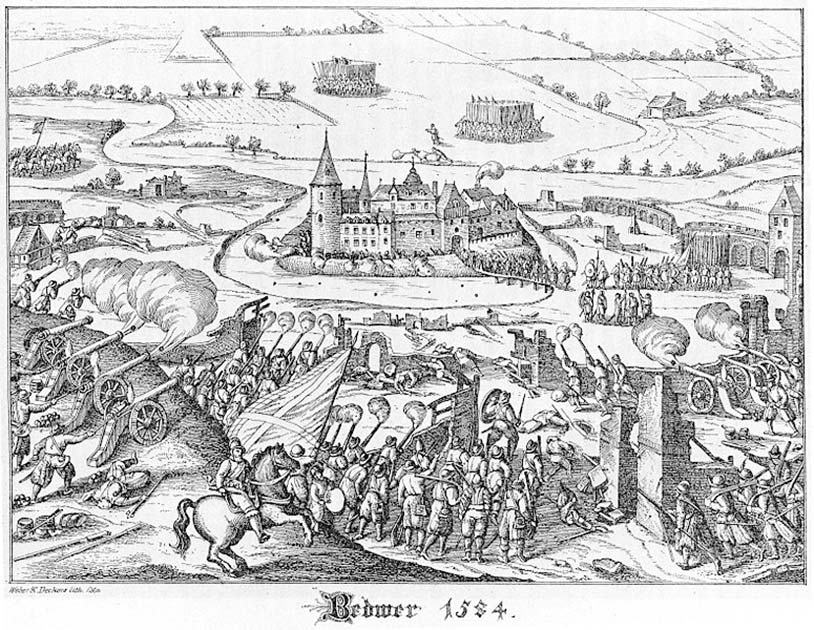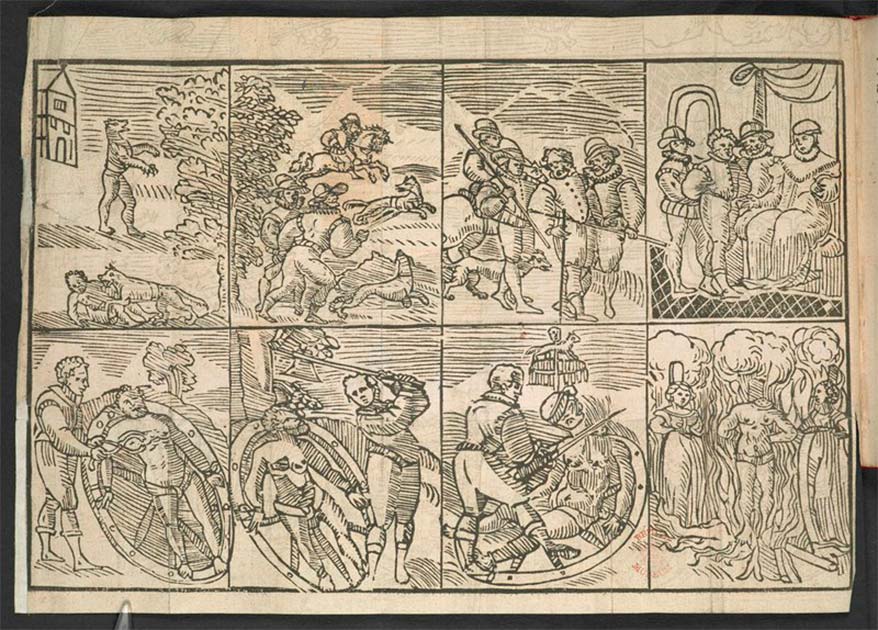Peter Stumpp: The True Story Of The Werewolf Of Bedburg
Throughout history, tales of werewolves have captivated human imagination, but none as chilling as the story of Peter Stumpp. Known as the Werewolf of Bedburg, his tale remains one of the most gruesome and controversial cases in European folklore and history. The story of Peter Stumpp is not just a legend but a real historical event that took place in the late 16th century, leaving a lasting impact on how we view werewolf mythology today.
Peter Stumpp's case is a fascinating yet horrifying account of justice, superstition, and the dark side of human nature. The events surrounding his trial and execution highlight the intersection of medieval beliefs, legal practices, and the relentless pursuit of answers in a world driven by fear and misunderstanding.
As we delve into this intriguing story, we will explore the life of Peter Stumpp, the accusations against him, the evidence presented during his trial, and the lasting legacy of his case. Through this article, we aim to provide a comprehensive understanding of the historical context, the cultural impact, and the enduring fascination with this infamous tale of the Werewolf of Bedburg.
Read also:Exploring The Life And Love Of Logan Henderson Couple
Table of Contents
- Biography of Peter Stumpp
- The Accusations Against Peter Stumpp
- The Trial of the Werewolf
- Evidence and Testimonies
- The Execution of Peter Stumpp
- Historical Context of Werewolf Beliefs
- Cultural Impact of the Werewolf of Bedburg
- Modern Perspective on the Case
- Myth vs. Reality: Separating Fact from Fiction
- Conclusion and Reflection
Biography of Peter Stumpp
Early Life and Background
Peter Stumpp, born in the late 16th century, was a farmer from the village of Bedburg, located in what is now modern-day Germany. Little is known about his early life, but records indicate that he lived a relatively ordinary life until he became embroiled in one of the most infamous cases of witchcraft and lycanthropy in history. Below is a summary of his known personal details:
| Full Name | Peter Stumpp |
|---|---|
| Place of Birth | Bedburg, Germany |
| Profession | Farmhand |
| Date of Execution | October 31, 1589 |
Life Before Infamy
Prior to his arrest, Peter Stumpp was known in his community as a simple farmer. However, whispers of his alleged dark activities began to circulate, leading to his eventual downfall. His life took a dramatic turn when he was accused of being a werewolf, a claim that would forever change his legacy.
The Accusations Against Peter Stumpp
Peter Stumpp's case began with accusations of murder, cannibalism, and witchcraft. The local populace claimed that he was responsible for the disappearance and death of numerous individuals, including children. These accusations were fueled by the discovery of human remains near his property, which were believed to be the victims of his alleged werewolf transformations.
Key Charges
- Werewolf Transformations
- Murder and Cannibalism
- Witchcraft and Sorcery
- Illicit Affairs
The Trial of the Werewolf
The trial of Peter Stumpp was a spectacle that drew attention from across Europe. Conducted under the auspices of the Holy Roman Empire, the proceedings were a blend of legal inquiry and supernatural investigation. The court sought to uncover the truth behind the allegations while grappling with the prevailing superstitions of the time.
Evidence and Testimonies
During the trial, several pieces of evidence were presented, including confessions extracted under torture, testimonies from alleged witnesses, and physical evidence such as the discovery of a magical belt believed to facilitate his transformations. While modern standards would dismiss much of this evidence as unreliable, in the context of the 16th century, it was deemed sufficient to convict him.
Confessions Under Duress
Peter Stumpp confessed to his crimes after enduring severe torture, a common practice during the period. His admissions, though coerced, were detailed and graphic, further solidifying public belief in his guilt. The use of torture in medieval trials raises ethical questions that continue to be debated to this day.
Read also:Does Beard Oil Help Growth Unveiling The Truth Behind Beard Care
The Execution of Peter Stumpp
Peter Stumpp's execution on October 31, 1589, was a grim affair. He was subjected to the breaking wheel, a brutal method of capital punishment reserved for the most heinous crimes. The spectacle was intended to deter others from engaging in similar acts, serving as a public reminder of the consequences of witchcraft and lycanthropy.
Historical Context of Werewolf Beliefs
To fully understand the case of Peter Stumpp, it is essential to examine the historical context of werewolf beliefs. During the 16th century, Europe was gripped by a wave of witch hunts and superstitions. Werewolves, alongside witches and other supernatural entities, were blamed for societal ills, from crop failures to unexplained deaths.
Religious and Cultural Influences
The Catholic Church played a significant role in perpetuating these beliefs, often conflating witchcraft with heresy. The Malleus Maleficarum, a notorious treatise on witch-hunting, contributed to the widespread fear and persecution of individuals accused of supernatural crimes. This climate of fear and superstition set the stage for cases like that of Peter Stumpp.
Cultural Impact of the Werewolf of Bedburg
The story of Peter Stumpp has left an indelible mark on popular culture. His tale has been retold in literature, film, and folklore, cementing his place as one of history's most infamous werewolves. The Werewolf of Bedburg continues to inspire contemporary works, reflecting our enduring fascination with the supernatural.
Modern Interpretations
In recent years, historians and scholars have revisited the case of Peter Stumpp, offering new insights and interpretations. Some suggest that his alleged crimes may have been the result of mental illness or social ostracism, while others argue that the case was a product of political intrigue and religious persecution.
Modern Perspective on the Case
From a modern perspective, the case of Peter Stumpp raises important questions about justice, human rights, and the role of superstition in historical legal systems. The use of torture to extract confessions, the reliance on anecdotal evidence, and the influence of religious authorities all highlight the flaws in medieval jurisprudence.
Ethical Implications
Today, the ethical implications of Peter Stumpp's trial serve as a cautionary tale about the dangers of unchecked power and the importance of due process. As we reflect on his story, we are reminded of the need for critical thinking and skepticism in the face of extraordinary claims.
Myth vs. Reality: Separating Fact from Fiction
Separating myth from reality in the case of Peter Stumpp is a challenging task. While some elements of his story are undoubtedly true, others have been embellished over time. Historical records, while incomplete, provide a glimpse into the events that unfolded, but the full truth may never be known.
Fact-Checking the Legend
According to historical accounts, Peter Stumpp was indeed tried and executed for his alleged crimes. However, the extent of his guilt and the veracity of the evidence presented against him remain subjects of debate. Modern historians continue to analyze the available sources, striving to uncover the truth behind this infamous tale.
Conclusion and Reflection
The story of Peter Stumpp, the Werewolf of Bedburg, remains one of the most captivating and chilling tales in European history. From his early life as a humble farmer to his dramatic downfall as a convicted werewolf, his case serves as a window into the superstitions and legal practices of the 16th century. While much of his story is shrouded in mystery, its impact on popular culture and historical discourse is undeniable.
As we reflect on the legacy of Peter Stumpp, we are reminded of the importance of critical thinking and ethical considerations in the pursuit of justice. We invite you to share your thoughts and insights in the comments below, and to explore other articles on our site that delve into the fascinating world of history and folklore.
References:
- Summers, Montague. The Werewolf. Kessinger Publishing, 2003.
- Wilby, Emma. Cunning Folk and Familiar Spirits. Sussex Academic Press, 2005.
- Behringer, Wolfgang. Shaman of Oberstdorf. Cornell University Press, 1998.

